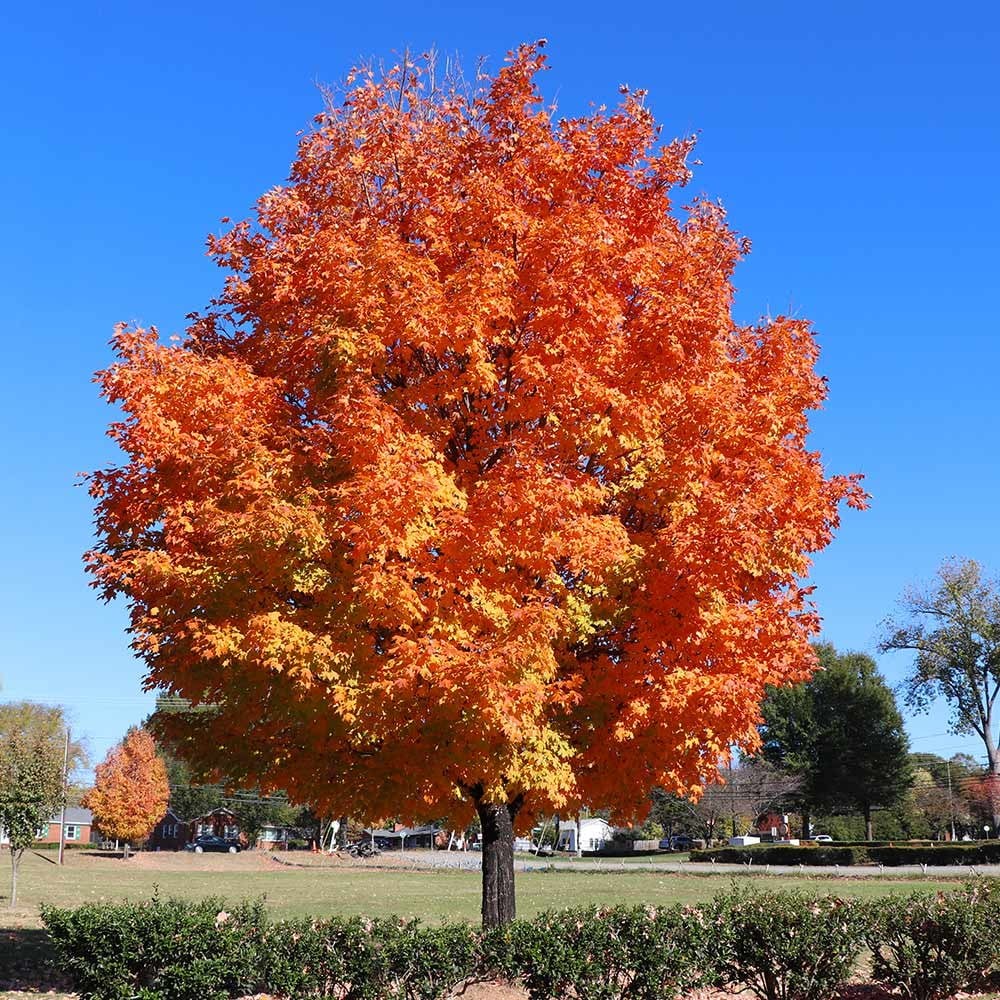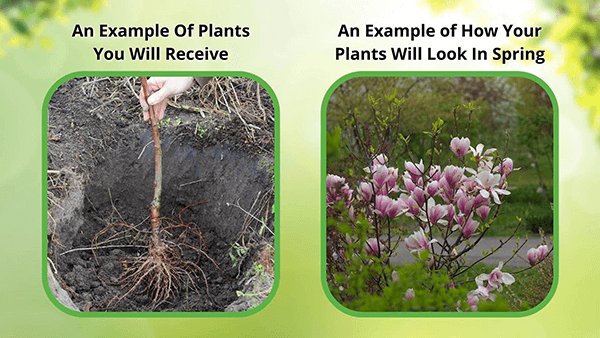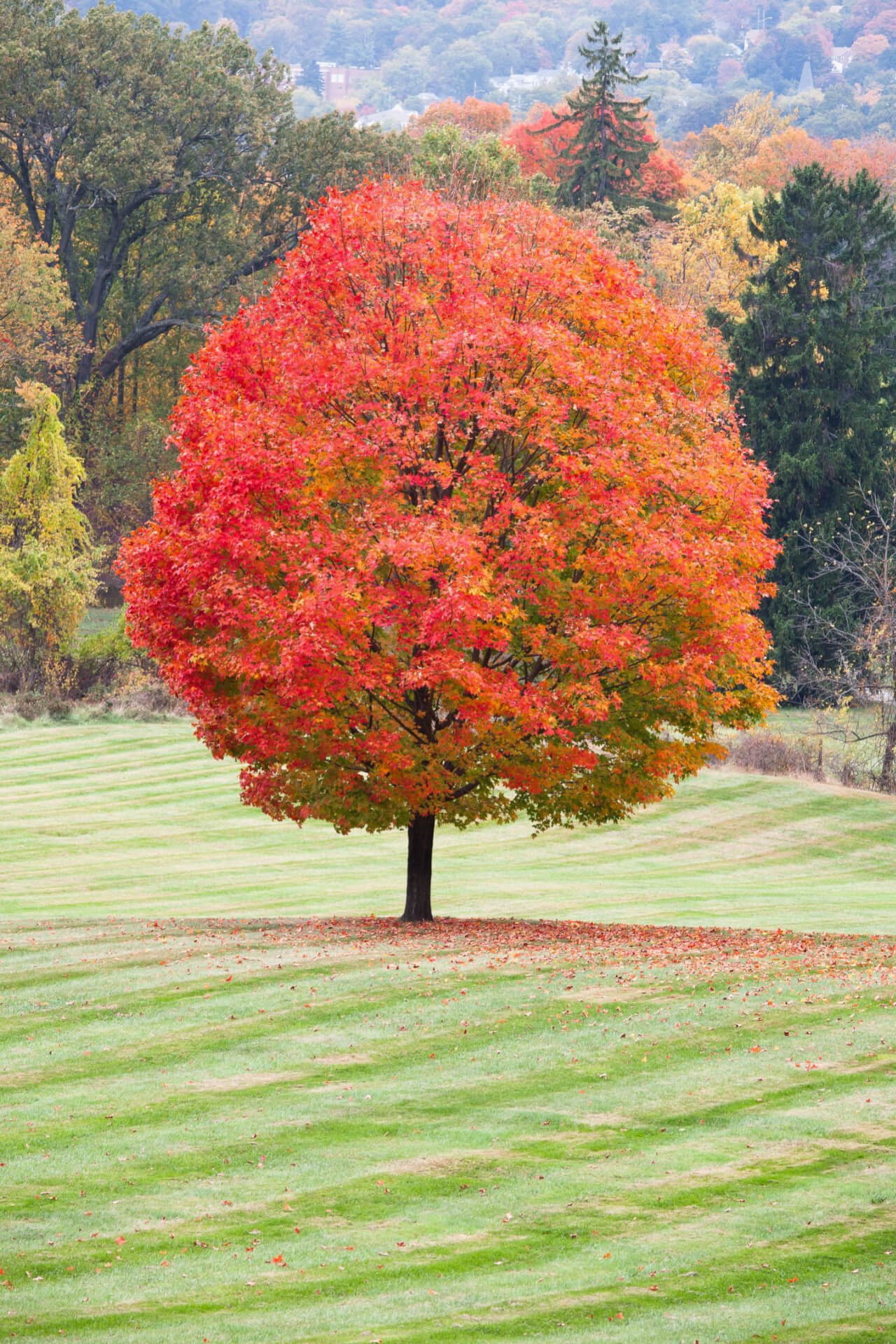



Sugar Maple Tree
Stunning fall foliage colors
Enhances property value significantly
Adaptable to various soil types
Thrives in
ZONE 3ZONE 4ZONE 5ZONE 6ZONE 7ZONE 8This plant ships:
May 251 Year Guarantee on all plants
Sugar Maple Tree - Acer saccharum
The Sugar Maple Tree (Acer saccharum) is a deciduous tree with beautiful red fall color. An essential tree for creating a wildlife haven.
Plant Details - Sugar Maple Tree
Family: Sapindaceae
Light Requirement: Full Sun
Water Needs: Moist
Height: 60 – 70 ft.
Spread: 40 – 50 ft.
Growth Rate: Fast
Bloom Time: Spring
Flower Color: Yellow
Wildlife Value: Attracts bees, butterflies
Landscape Uses and Maintenance – Sugar Maple Tree
Sugar Maple Tree is an incredibly statuesque tree that will enhance your landscape. Their excellent upright, yet rounded branching is highlighted in the winter. Autumn color is bright orange and red and is a lovely option for creating fall color in your landscape.
This is an ideal shade tree for your yard that will be well loved by many generations to come – especially if you are starting your own sugarbush. Plant a couple at the edge of your property to create shade for passerby or for lowering your heating costs. A lovely tree to sit and relax under with a book!
The flowers of this tree are small and bloom in early spring. They are a bright yellow in color. The flowers are not showy. They are later replaced by their signature winged seeds (samaras) that “helicopter” their way to the ground.
Plant it in well draining soil. It is not tolerant of high levels of salt or compacted soil. Drought tolerant.
This a low maintenance tree that will not need much direct attention after the first year.
Water your new tree thoroughly until well established.
Plenty of wildlife is attracted to the seeds, including mammals and birds.
Prune damaged or diseased branches.
This tree is not prone to many pathogens. Not deer resistant when young. Protect with caging.
Noteworthy Characteristics
Sugar Maple Tree is the essential tree for a maple syrup business. Create your own sugarbush in your backyard and try to learn this old fashioned skill. You will taste – and reap - the rewards of homemade maple syrup!
It is the host plant for many different butterfly species, including Rosy Maple moth, Imperial moth, and Cecropia silk moth.
This Is How Your Plants Will Look upon Delivery

Height at Maturity
Over 25 Feet
Care
Sugar Maples prefer well-drained, loamy soil and regular watering, especially during dry spells. Mulch near the ground to maintain moisture and prevent weeds. Trim in late winter or early spring to remove dead or diseased branches. Fertilize annually for optimal growth.
Plant Reproduction
Sugar Maple Tree spreads by seeds dispersed by wind.
Plant bare root trees during the dormant season in early spring or late fall (November through April). Dig the hole twice as wide as the roots so the soil is well-drained. Position the tree so the root flare is at or just above ground level. Fill the hole back with the soil you dug from and water. Maintain soil moisture, especially in the tree's early years, by providing deep, regular watering. Apply a 2-4 inch mulch away from the trunk at the base to retain moisture and suppress weeds. Prune trees during the first few seasons to establish strength and resilience, remove damaged branches, and continue maintenance pruning as the tree matures. Regularly inspect for pests and diseases and apply integrated pest management practices. Protect young trees from mechanical damage and extreme temperatures with tree guards, and stake them if necessary for support, removing the stakes after one or two years.
Shipping date depends on the date displayed and chosen when you order from the product's page.
We only accept returns on plants verified dead. If you think your plants have died, we offer a 1 year warranty, please use this File a Claim Link to verify dead plants and start with return warranty process.





.png?v=1722377964879&em-origin=cdn.accentuate.io&em-format=auto)
Maple Syrup Production:
Beyond its beauty, the Sugar Maple is famous for its sap, which can be harvested to make delicious maple syrup.
Longevity:
This tree is known for its long lifespan, offering years of beauty and shade in your garden.
Shade and Structure:
Its dense, broad canopy provides excellent shade and adds a majestic structure to any landscape.
Versatile Landscaping:
With its adaptable nature, the Sugar Maple fits well in various garden styles and soil types, enhancing both urban and rural settings.
Caring Tips
How do I care for my Sugar Maple Tree?
Each box contains detailed care instructions and information about your product. But here's the basics.
Care Tips
Sugar Maples prefer well-drained, loamy soil and regular watering, especially during dry spells. Mulch near the ground to maintain moisture and prevent weeds. Trim in late winter or early spring to remove dead or diseased branches. Fertilize annually for optimal growth.
Light Requirements
The Sugar Maple Tree flourishes in full sun to partial shade. It favors at least 4-6 hours of direct sunlight daily but can endure some shade, especially in hotter climates. Optimal growth occurs with good sun exposure for vibrant fall color.
Hardy Planting Zones
3 • 4 • 5 • 6 • 7 • 8
Header
Use this content to share information about your store and products.
Frequently Asked Questions
How often should I water my plants?
How do I know if my plant is getting too much or too little sunlight?
What should I do to prepare my plants for winter?
What are the signs that my plant needs fertilizing?
How can I prevent pests from damaging my plants?
How do I choose the right plant for my climate zone?






